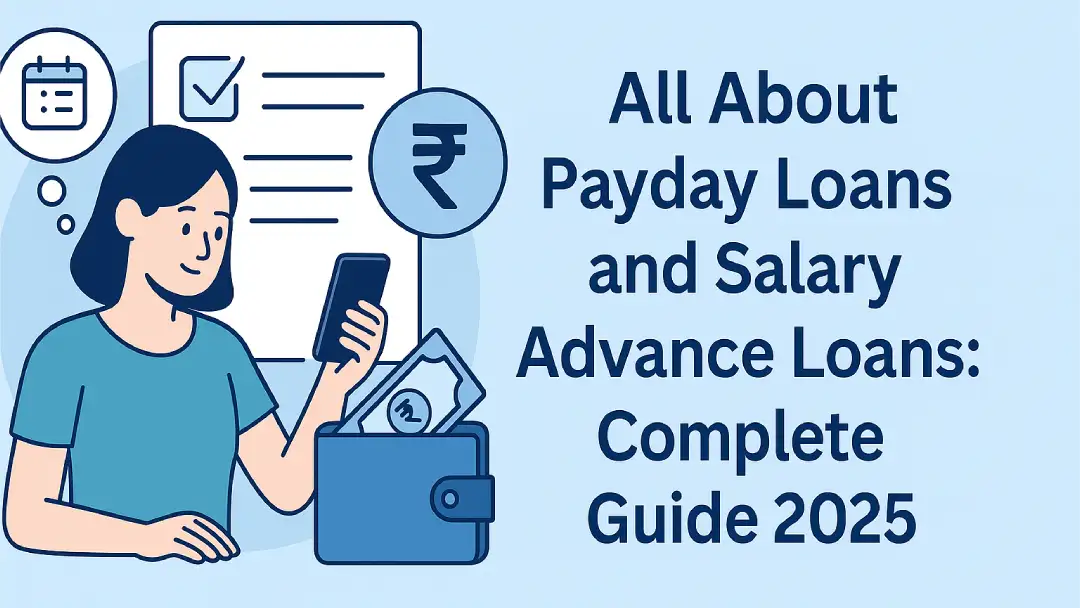All About Payday Loans and Salary Advance Loans: Complete Guide 2025

Everything you need to know about payday lending in India – features, benefits, regulations, implementation, and technology platforms
Start Free Trial
What are Payday Loans and Salary Advance Loans?
Payday loans and salary advance loans are short-term, small-ticket unsecured loans designed to help salaried individuals bridge the gap between paydays during financial emergencies. These products have gained significant popularity in India as they provide instant access to funds without the lengthy approval processes of traditional loans.
Core Concept
The fundamental principle is simple: individuals who have already earned their salary but haven’t received it yet can access a portion of that earned income immediately. The loan is repaid on the next payday when the salary is credited.
Key Characteristics
- Loan Amount: ₹1,000 to ₹50,000 (small ticket size for immediate needs)
- Tenure: 7 to 30 days (ultra-short duration aligned with salary cycle)
- Approval Time: Instant to 15 minutes (real-time decisioning)
- Purpose: Emergency expenses, medical bills, household repairs, unexpected bills
- Collateral: Unsecured – no collateral required
- Documentation: Minimal – Aadhaar, PAN, salary proof, bank statement
- Disbursement: Instant transfer to bank account via IMPS/UPI
- Repayment: Single bullet payment or 2-4 installments
Types of Payday and Salary Advance Products
1. Traditional Payday Loans
- Description: Standalone loans offered by NBFCs and fintech lenders to salaried individuals without employer integration.
- Typical Terms: ₹5,000-₹50,000, 7-30 days, 1-3% daily interest or 24-36% monthly
- Target Audience: Any salaried individual with income proof
- How It Works: Customer applies via app/website, lender verifies income and creditworthiness, approves loan, disburses to bank account, collects repayment on due date
2. Employer-Integrated Salary Advance
- Description: Advance on earned salary facilitated by employer through partnership with fintech platform.
- Typical Terms: ₹2,000-₹25,000, until next salary date, 0-2% processing fee
- Target Audience: Employees of companies that have integrated with the platform
- How It Works: Employer integrates payroll system with platform, employees get access to earned wages, platform calculates exact earned amount based on attendance/working days, employee withdraws via app, amount deducted from next salary by employer
3. Earned Wage Access (EWA)
- Description: On-demand access to already earned but unpaid wages, increasingly popular as employee benefit.
- Typical Terms: Up to 50% of earned salary, instant withdrawal, 0-1% transaction fee
- Target Audience: Employees of partner companies, especially in BPO, manufacturing, retail, hospitality
- How It Works: Employer sponsors EWA as employee benefit, platform tracks daily attendance and calculates earned wages, employees can withdraw earned amount anytime via app, employer settles with platform on payday
4. Instant Personal Loans
- Description: Quick unsecured personal loans with slightly longer tenure than traditional payday loans.
- Typical Terms: ₹10,000-₹2,00,000, 3-12 months, 18-36% APR
- Target Audience: Salaried and self-employed individuals with good credit
- How It Works: Similar to payday loans but with longer tenure and EMI-based repayment, appeals to those who need larger amounts or prefer to spread repayment
5. Emergency Loans
- Description: Crisis loans for urgent situations like medical emergencies, vehicle breakdowns, home repairs.
- Typical Terms: ₹5,000-₹1,00,000, 15-90 days, 2-5% monthly interest
- Target Audience: Individuals facing unexpected emergencies
- How It Works: Expedited approval process with lenient criteria for genuine emergencies, may require proof of emergency situation, flexible repayment options
How Payday Loans Differ from Traditional Personal Loans
| Aspect | Payday Loans | Traditional Personal Loans |
|---|---|---|
| Loan Amount | ₹1,000 – ₹50,000 | ₹50,000 – ₹25,00,000 |
| Tenure | 7-30 days | 12-60 months |
| Approval Time | 5-15 minutes | 1-7 days |
| Documentation | Minimal (Aadhaar, PAN, bank statement) | Extensive (income proof, ITR, bank statements, address proof) |
| Credit Score Requirement | 650+ (flexible) | 750+ (strict) |
| Disbursement | Instant (within minutes) | 1-3 days post-approval |
| Application Channel | 100% digital (app/web) | Branch or digital |
| Interest Rate | 1-3% daily or 24-36% monthly | 10-24% APR |
| Repayment Mode | Bullet payment or 2-4 installments | EMI over tenure |
| Purpose | Emergency/unexpected expenses | Any personal purpose |
| Automation Level | 95-100% automated | 50-70% automated |
